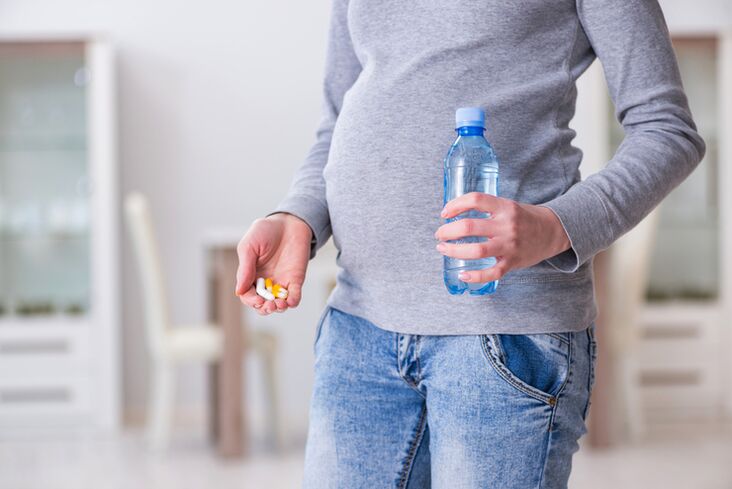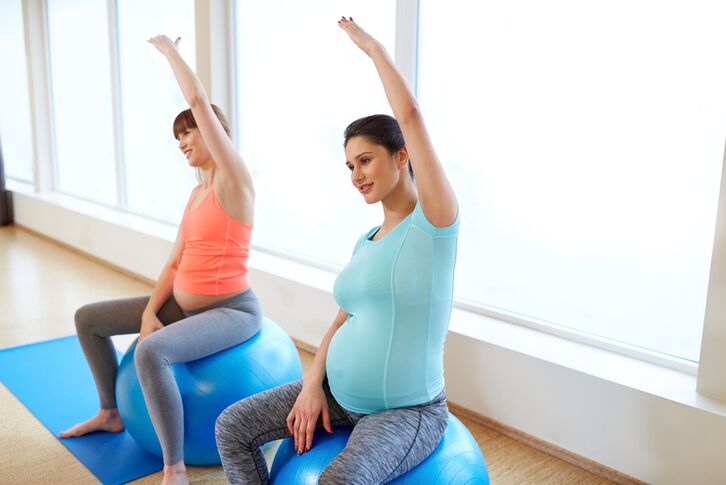
Small pelvic varicose veins in women are characterized by increased diameter and incentives.Often, this condition is associated with affected vein valves.Although there is a high prevalence, the disease is rarely diagnosed.
This is due to a variety of symptoms, the main one is the pain syndrome.It is a characteristic of gynecological, neurological, gastrointestinal pathology.Sometimes VRVMT is illuminated as a disease of the musculoskeletal system-certainly, under the rooser syndrome and hip joint arthrosis.
Description and reason
Extended veins in the pelvis are not always described, as they are often located far under the skin.This is one of the reasons for the complexity of the diagnosis.With VRVMT, the elasticity and tone of the veins decrease, the blood circulates worse and begins to stagnate.As a result of blockage and bloating veins, obstacles are created for blood flow.
The BRVMT mechanism is based on the failure of the ovarian veins, which is why blood flows back, and reflux occurs.This leads to increased intravenous pressure and blood stagnation, as well as the formation of an additional circulation of blood circulation - collateral.
The most important starting factor is displacement - a connective tissue backward, which is about a third of the population.Dyplasia is a congenital defect in which the level of collagen needed for the strength of the vessel is reduced.
During the period after menopause, the severity of varicose veins decreases, which shows in favor of the theory of hormone influence on the vein.
Significantly weakening the tone of the vein system can progesterone - a female sex hormone, also called "pregnancy hormone."On the one hand, it reduces the tone of the uterus, thus prevents miscarriage, and on the other, it weakens the blood vessel wall and causes their development.This condition is aggravated by the growth of the uterus, which presses more on the large veins and causes the formation of blood flow shortcuts, collateral.That's why VRVMT is so common during pregnancy.
The increased risk factor of varicose veins include the following:
- too high or, rather, inadequate physical activity;
- various;
- double birth or complex;
- gynecological disease - endometriosis, myoma, and so on;
- Long steroid hormone intake, including contraceptives.
Type and degree

The varicose veins in the pelvis are of two types.The first type is called the varicose veins of the vulva and the perineum, the second - the pelvic vein pletora syndrome.Both types can develop separately or combine each other, most often.Pregnant women face primarily with damage to the vulvar veins, which more than 91% of cases passed independently after childbirth.
VRVMT is also classified by origin and localization.By the origin, varicose veins are divided into primary and secondary.The main varicose vein develops due to the lack of vein valve.Pregnancy is a trigger.Secondary varicose veins are caused by system disease.
According to VRVMT localization, it is the amount when all pelvic veins are affected, and partially, affecting the selective one or more veins.Depending on the diameter of the veins, 3 degrees of severity are distinguished:
- 1 tbsp.- up to ½ cm;
- 2 tbsp.- 0.6 - 1 cm;
- 3 tbsp.- More than 1 cm.
Symptom
Symptoms of varicose veins include:
- Rupture and painful weight in the lower abdomen;
- increased number of emissions;
- various urinary tract violations;
- The rapid weight gain is already present at the beginning of pregnancy.
Pain, as a rule, increases after sex, hypothermia, walking or standing.With damage to the surface veins, red vascular veins and mesh can appear on the genitals and above the hips.
Frequently, the signs of varicose veins resemble cystitis: very painful urine in small parts.
Closer to the end of pregnancy, burning and swelling in the genitals may appear.The same symptoms require special attention, due to the development of inflammation or rupture of the veins that can cause severe bleeding to be excluded.
What is a dangerous vrvmt
Varicose veins can provide some complications that pose a danger to life.First of all, it is thrombophlebitis or thromboembolism - an inflammation of the vein, leading to the formation of blood clots.If blood clots - blood clots - will clog the vessels, the blood supply to the placenta will be blocked.The results of the blockage will be fetoplacental failure and fetal hypoxia.
Another serious complication is the threat of miscarriage and premature birth, due to infarction of blood circulation.
Due to the expanded veins, doctors may prohibit the birth of a natural way to minimize the risk of rupture, threatening internal bleeding or uterus.
Treatment

In pregnant women, drug therapy is limited to taking phlebotonics and anti -tromoids.With the pain mentioned, the use of funds from anti -inflammatory groups (NSAIDs) is not stable.If there is a threat of child oxygen starvation, treatment is performed in the hospital using antihypoxy preparations.
Starting from the fourth month, you can perform a phlebosklerizing operation, where the venosclerosing agent is introduced into the affected veins.The effect of the procedure is evaluated after 7 days, if necessary, it is repeated.During the week after surgery, it is necessary to wear compression linen.You can achieve vein involvement in one session, but more often you need to perform a 3-4 phlebosclerosis procedure.
Persistent pain syndrome and large diameter of advanced veins exceed 1 cm, are indications for surgical intervention.It can only be carried out in the first 2 trimester of pregnancy with a laser method or a soft radio waves.If VRVMT is caused by uterine retroflexion, plastic surgery is performed on the uterine ligaments.
Doctors advise pregnant women with varicose veins diagnosed from small pelvis and perform exercises that prevent blood stagnation in the pelvis.Wearing compression and diet will help slow down the development of VRVMT.
The menu should be made in such a way that it contains plant foods, as well as sufficient amounts of milk and cereals.
Good effects give up ascending contrast, or perineal baths.During the procedure, a woman sits in a special chair in the form of a ring, water is supplied from the bottom and directed to the throat.The duration of the procedure is 3-5 minutes, the treatment includes 15 to 20 sessions.
Prevention of development and development of varicose veins is mainly reduced to optimize motor and nutritional activity.The most important thing is to exclude static and dynamic loads, and adjust your diet, introducing more fruits and vegetables into the diet.In the early stages of varicose veins, exercise therapy and respiratory gymnastics, use compression products from knitwear.


















